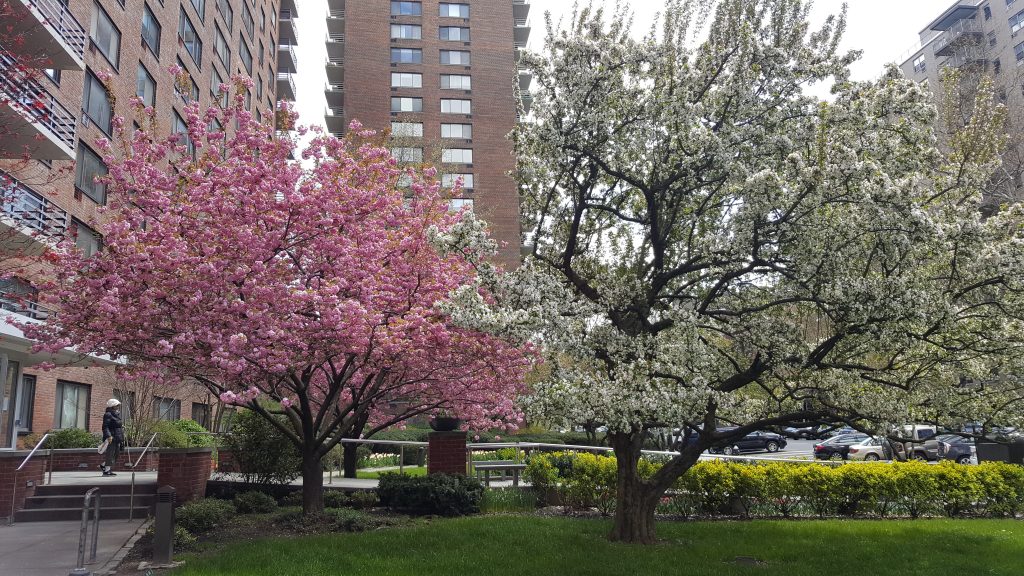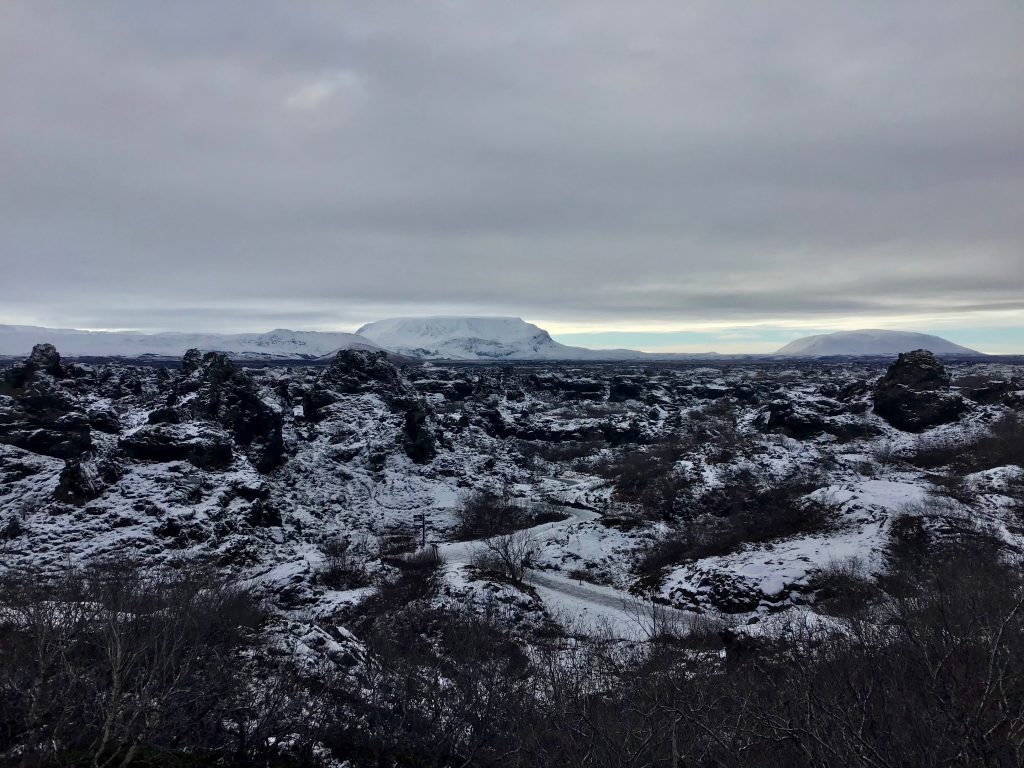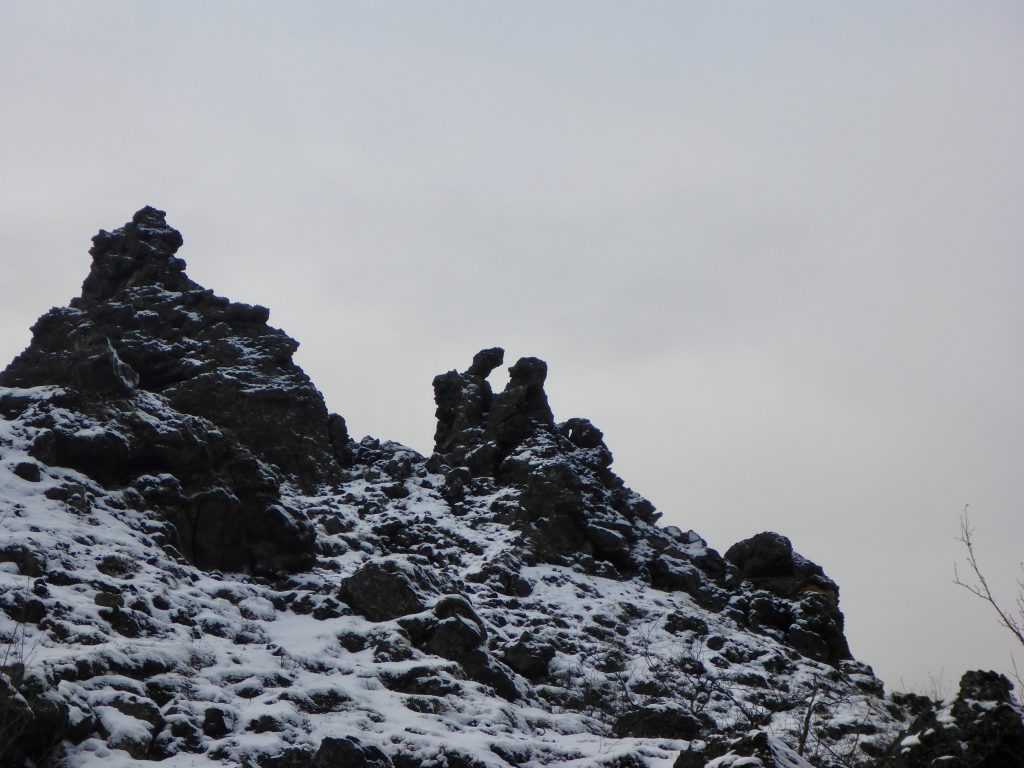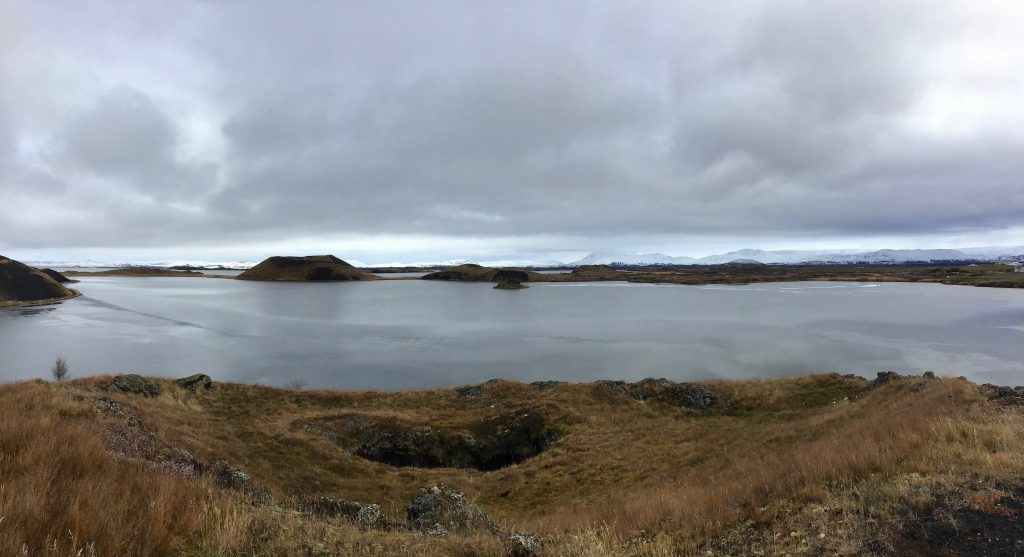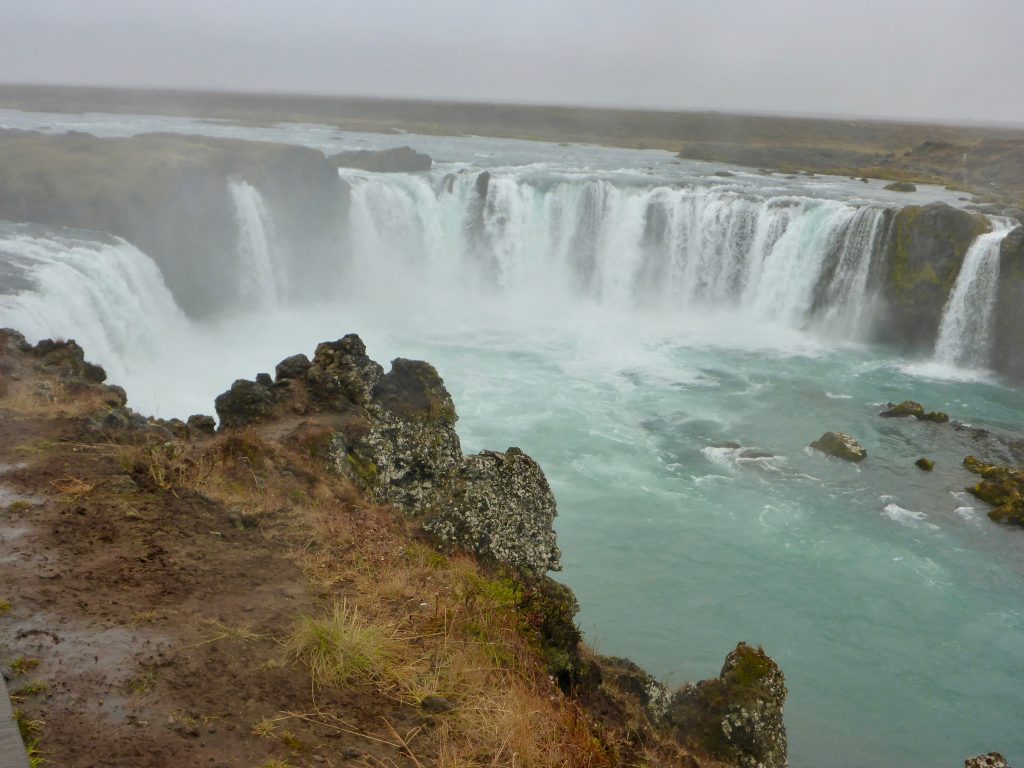A definite highlight of the trip was the day we went whale watching from Dalvík, about a 30-minute drive from Akureyri. Before boarding the boat, we spent several minutes struggling to get into these puffy red jumpsuits to keep us warm while out on the water. Even more importantly, they would keep us afloat if we fell in.
The boat departed and I immediately felt excited to be on the water, smelling the salty freshness and enjoying the gorgeous scenery. We were surrounded by low-lying, snow-capped mountains. In certain directions we could see brightly colored houses dotting the shoreline. If we saw any whales, it would be an added bonus to what was already a spectacular boat ride.

And then we got lucky, as the captain spotted six humpbacks swimming a short distance away. We watched in awe as these majestic creatures moved their massive bodies effortlessly through the water, rising up before plunging down showcasing the underside of their flukes. They came so close I could see their blowholes and the outline of their white flippers beneath the surface of the water. Equally exciting was seeing the spray shoot up in the air from their blowholes.
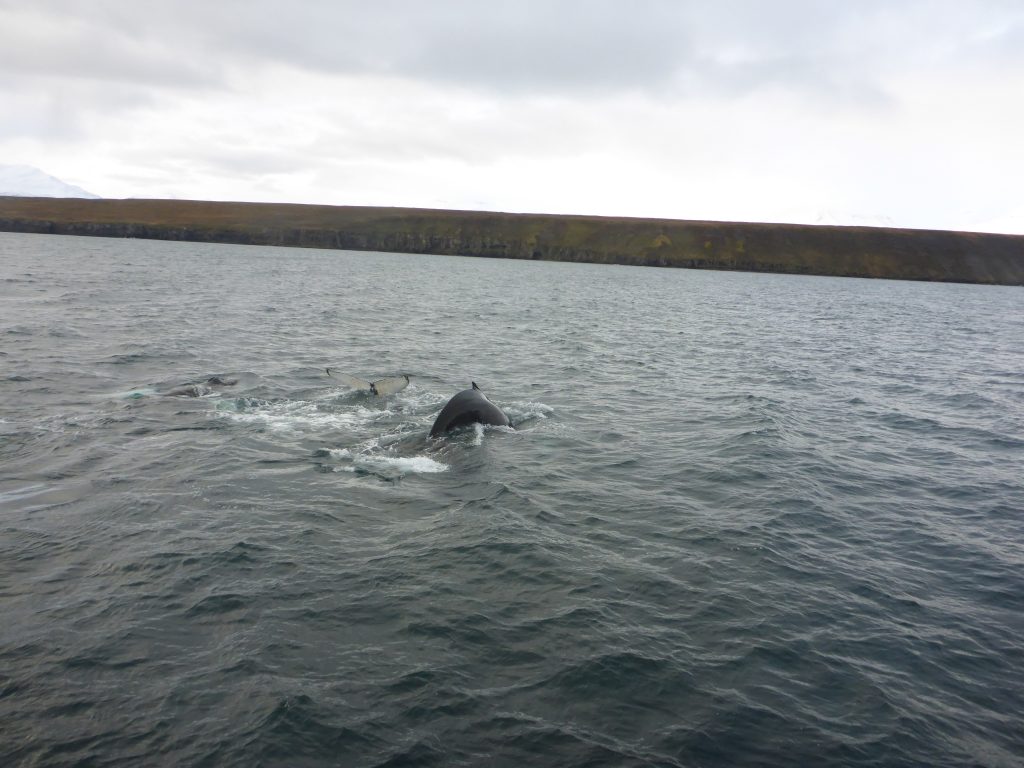
I could have watched them for hours, but we had to move on to the next activity, fishing. Before fishing, the boat supplied us with hot chocolate and pinwheel cookies spiraled with cinnamon to warm us up. It was much appreciated. I wasn’t into the fishing, but several people in the group caught cod and haddock, which the captain’s daughter filleted right on the boat.
First she eviscerated the fish and threw the guts overboard, to the delight of the birds that were closely following our boat. Then she carved the fish up and placed the choice pieces in a bucket of water. When we disembarked she grilled them with butter. Delicious!
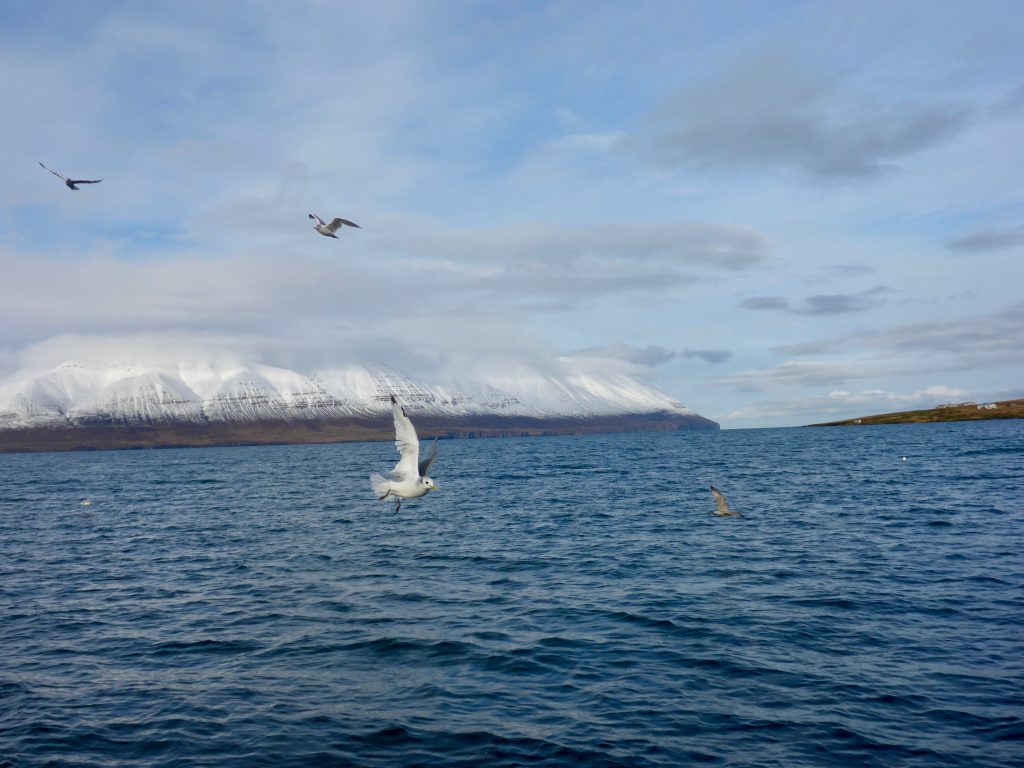
After our fresh fish lunch, we returned to Akureyri for an afternoon of sightseeing and exploring. It was a scenic town from most directions and was easy to get around, even though there was a steep hill.
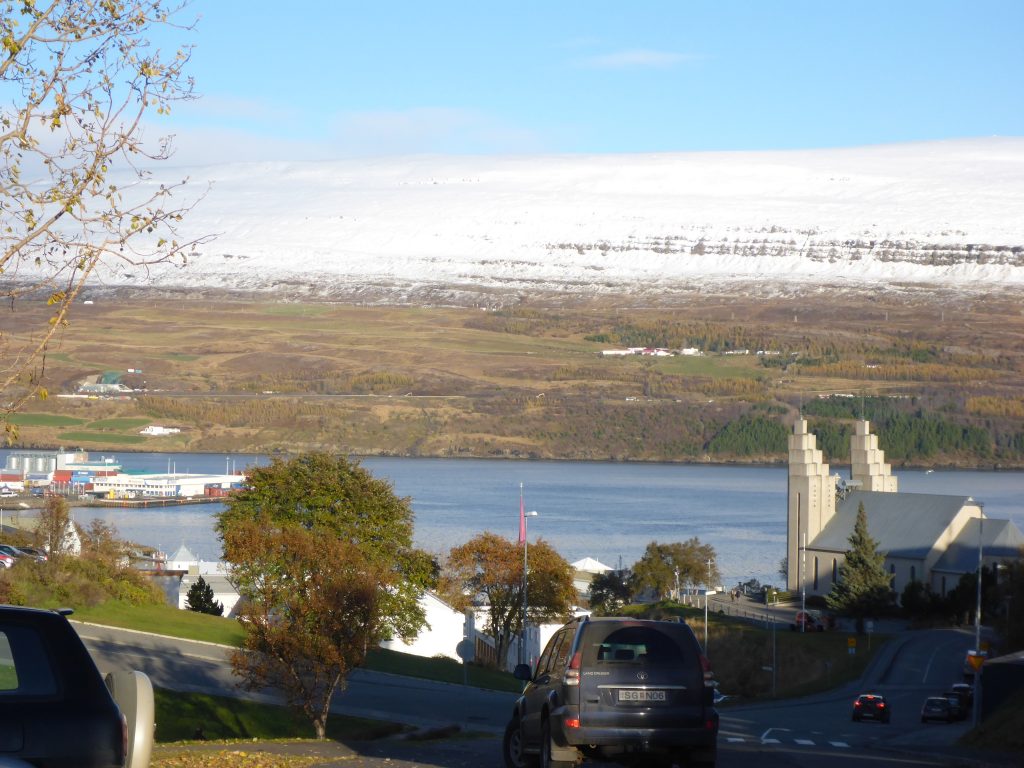
Stay tuned for the final days of the trip in the southern part of Iceland.
Read about the other adventures here.


